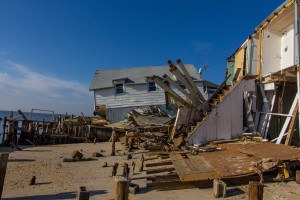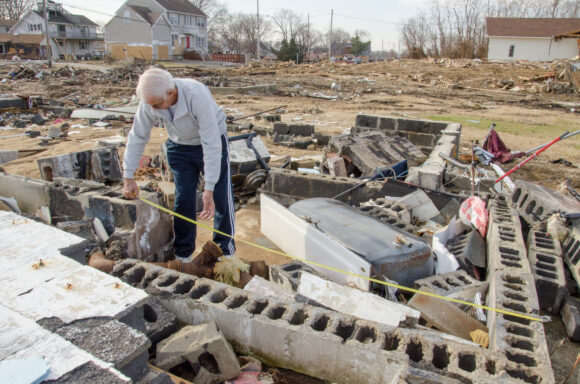Although demand surge was an issue for the property/casualty industry following a trio of hurricanes in 2005, for Superstorm Sandy the demand-surge impact is minimal so far, an expert said recently.

There has only been a price impact of 2 percent related to the demand surge for Sandy, said Jason Taylor, assistant vice president of business development for Xactware, a Verisk Analytics company that provides estimates of building and repair costs to insurers and contractors.
Explaining the term demand surge during the Extreme Weather Insurance Risk Management Congress in New York last week, Taylor said there has only been a 2 percent increase over what the expected level of pricing would be for labor and materials, such as roofing, drywall and flooring.
Contrasting this with the aftermath of Hurricanes Katrina, Rita, Wilma and Ike, he said that for those storms, demand surge impact was roughly 6 percent (or more precisely, 5.82 percent).
Taylor attributes the difference to better preparations for the more recent Northeast storm.
“Our analysts think that has to do with the logistic systems that exist today. You hear the stories of the large big-box material suppliers with truckloads of sheeting and drywall and flooring materials on their way as the storm is hitting to that area,” he said.
While improved logistic and better material supply has lowered the demand surge impact, what is driving the demand surge that still exists is labor, he said, referring at one point to the aggressive practices of contractors who knock on the doors of storm-impacted property owners the day after an event.
Sandy By The Numbers
Taylor made his comments just after session moderator, Alex Korb, a manager at Verisk Analytics, provided the latest estimate of Sandy insured property losses developed by Verisk’s Property Claim Services unit—$18.75 billion.
PCS says that Sandy impacted 15 states, the District of Columbia and Canada, Korb reported, noting that New York and New Jersey account for $16 billion, or 85 percent, of the latest PCS estimate of insured industry property damage for personal property, commercial property and commercial and personal vehicles losses.
PCS confirmed for Insurance Journal that these insured loss estimates include fixed property, building contents, and time-element losses—including business interruption losses—in addition to vehicle losses.
Focusing in on New York and New Jersey at the New York City conference, Korb noted that the PCS figures have developed significantly since the prior estimation two months ago when each state had just over $4 billion in insured losses in these lines.
Now New York has $9.6 billion and New Jersey has $6.3 billion.
Breaking down the losses for the two states by line, Korb said roughly half of the $16 billion total comes from commercial lines. Specifically, commercial property accounts for $8.1 billion, he said, while personal property accounts for $5.2 billion. The remainder—$2.6 billion—is attributable to personal and commercial auto losses.
Turning to claim counts, Korb said Sandy is estimated to have caused 1.5 million claims across all 15 states, with New York and New Jersey accounting for the bulk of that—1.1 million claims split roughly equally between the two.
In contrast, there were 1.7 million insurance claims counted for Hurricane Katrina, with a concentration in Mississippi and Louisiana which together had 1.5 million claims, Korb said.
He was also able to break down the insured loss dollar estimates for Sandy for New York and New Jersey by county using the Verisk Catastrophe Index, revealing that there were five counties in these two states where insured loss across the three lines of business exceeded $1 billion:
• Brooklyn, N.Y., with $3.5 billion
• Nassau County, N.Y., with $2.1 billion
• Monmouth County, N.J., $1.6 billion
• Queens, N.Y., $1.5 billion
• Ocean County, N.J. , $1.1 billion
Noting that New York’s Manhattan is close behind with $900 million, Korb said the six counties together account for $11 billion of the $18.75 billion Sandy total estimate.
(According to materials distributed at the Extreme Weather Conference, the Verisk Catastrophe Index used to develop the county-by-county figures is based on proprietary post-loss event calculation of AIR Worldwide, another Verisk company. The index can be used as a benchmark for catastrophe bonds and other insurance-linked securities, the description said.)
Moving outside of New York and New Jersey, Korb said the Pennsylvania, Connecticut and Maryland rounded out the top five states in terms of loss dollars for Sandy. Providing the corresponding loss estimates, he presented this top-five list:
• New York, $9.6 billion
• New Jersey, $6.3 billion
• Pennsylvania, $700 million
• Connecticut, $500 million
• Maryland, $400 million
Was this article valuable?
Here are more articles you may enjoy.


 Waymo to Update Software Across Fleet After Major Power Failure
Waymo to Update Software Across Fleet After Major Power Failure  Flooding in California Leads to Soaked Roads, Water Rescues and 1 Death
Flooding in California Leads to Soaked Roads, Water Rescues and 1 Death  ‘Door Knocker’ Roofers Were Everywhere. NC Farm Bureau Saw an Opportunity
‘Door Knocker’ Roofers Were Everywhere. NC Farm Bureau Saw an Opportunity  LA Fires Push Insurers’ 2025 Disaster Losses to $107 Billion
LA Fires Push Insurers’ 2025 Disaster Losses to $107 Billion 